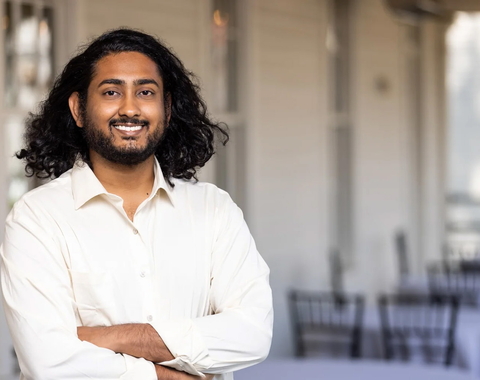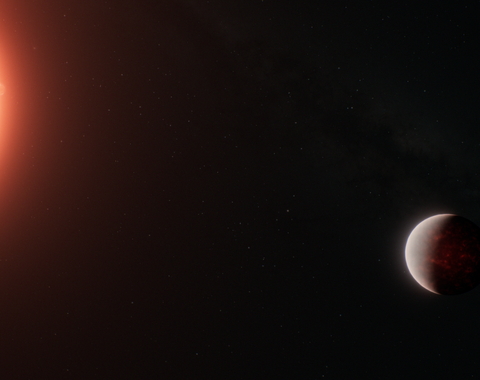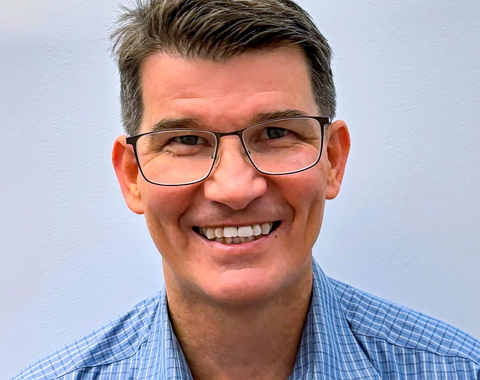The Carnegie Science Observatories recently welcomed Staff Scientists Jessica Spake and Peter Senchyna, along with Hale Scholar Shreyas Vissapragada. Each brings with them a wealth of expertise—Spake her groundbreaking work on exoplanetary atmospheres, Senchyna his explorations of young, massive stars, and Vissapragada his deepening understanding of planetary evolution.
Read below for a Q&A with these stellar early career astronomers who are pushing the boundaries of what we know about stars, planets, and the complex workings of the cosmos.
The Scientists
Spake joined us from Caltech, where she held a NASA Sagan Fellowship, following her time as a Heising-Simons 51 Pegasi b Fellow. Her research focuses on characterizing the atmospheres of giant, gaseous exoplanets as they transit their stars. In 2018, she achieved a significant milestone by making the first-ever detection of helium in an exoplanet
Learn moreSenchyna stepped into a Staff Scientist role after four years at the Carnegie Observatories, where he was both a NASA Hubble Fellow and a Carnegie Postdoctoral Fellow. His research focuses on young, massive stars with fewer heavy elements than our Sun. These stars—common in distant, ancient galaxies—are hard to find nearby, but studying them is crucial for piecing together how the first galaxies formed and grew
Vissapragada arrived from Harvard University, where he was also a 51 Pegasi b Fellow. He studies the evolution of exoplanets, particularly how their atmospheres and orbits change over time. He designed a custom filter for Palomar Observatory that uses ultranarrowband photometry to measure helium escaping from exoplanet atmospheres. This innovation has provided new insights into how gas giants lose or retain their atmospheres—offering a deeper understanding of planetary stability over time.
Q&A
CS: Can you tell us about the moment or discovery that first made you fall in love with astronomy?
Spake: When I was 16, I read Dan Brown’s Angels and Demons, in which the female lead’s job is to make antimatter at CERN. Before then, I’d never imagined that I could study the grandest mysteries of the universe and be paid for it. I immediately decided to do a physics degree. But I struggled with it. In my third year, we had a single guest lecture on exoplanets and how you find them with the transit and radial-velocity techniques. I was like… exo-WHAT now!?
It blew my mind that people had discovered real planets around other stars using simple, clever, indirect techniques. They used physics tricks to approach a deeply human question—is there anyone else out there? Before the class was over, I had decided to spend the rest of my life trying to join the effort.
Senchyna: I was apparently pretty into space at a young age; I've even found some "artistic" interpretations of Hubble Space Telescope images I made when I was a few years old. I think participating in the Science Olympiad and looking through telescopes in high school was when I really started getting hooked on astronomy. Then, getting to play with real Hubble data as an undergraduate quickly sealed the deal for me.
Vissapragada: As part of an undergrad class, I got to visit the MDM Observatory (on Kitt Peak in Arizona) with a bunch of friends. When we arrived, it was cloudy, so we spent the first part of the night playing Catan and generally having a wonderful time indoors. In the middle of it all, someone ran inside to tell us that the clouds had cleared, and we all went outside to "ooh" and "ahh" at the moonless sky. That's the first time I remember really thinking that I wouldn't mind doing this for a long time.
CS: What drew you to Carnegie Science Observatories?
Spake: Carnegie is the only place in the world where I can live my childhood dream. Here, my job is to study the most meaningful mysteries in the universe…and that’s it. It took me a while to stop looking for the catch.
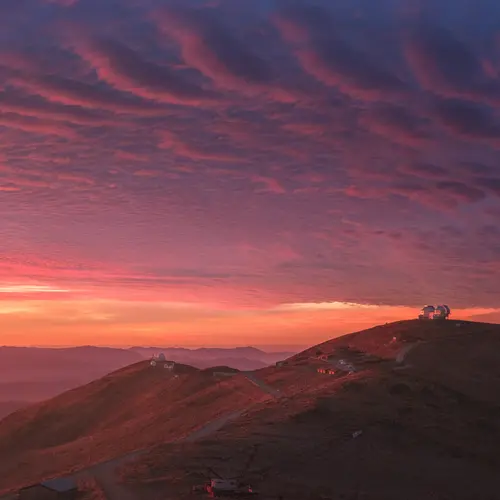
Being at Las Campanas at sunset when the Atacama desert looks like a rainbow-colored Martian landscape, after eating a Chilean feast made by kitchen legends, using some of the most ingenious and precise tools humans have ever built—it makes me feel like I’m living my childhood vision of a scientist. Like I'm in my own sci-fi novel!
Also, I feel like Carnegie values—and wants to help expand—my other work: volunteer tutoring with homeless children. Let me know if you want to get involved!
Senchyna: Access to large glass at LCO and new instruments (and the folks who build them) is a huge draw for an observer like me. But on top of that, it's the people and atmosphere of the Observatories too; it's a place that feels very encouraging of folks thinking big, taking risks, and designing projects on a longer timescale than is typically easily accommodated at other institutions.
Plus, the concentration of postdocs, staff, and graduate students and both scientific and instrumental expertise makes it a particularly exciting place to build a collaborative and dynamic group.
Vissapragada: A few different things! Definitely access to Las Campanas, to start with. Although I've started to do some space telescope things recently, in my heart of hearts, I am a ground-based observer, and Carnegie Science is a place that really embraces that spirit. I also get the sense that it's a very dynamic environment that's open to new, higher-risk ideas—especially when it comes to exoplanets. For me, those endeavors are the ones that make being a scientist really enjoyable, even when they don't always pan out.
CS: All three of you are early career astronomers joining us from a postdoctoral position. How did your time as a postdoc influence your approach to research? As an early career scientist, what advice would you give to graduate students planning their next steps?
Spake: During my time as a postdoc, I learned that joy is key. Being able to enjoy your work and follow your innate curiosity is a privilege that you must treasure.
At the same time, it's important to remember that some people have been given more safety, time, and resources to enjoy their work than others. So if you’ve lost the joy in your work—or if you've never had it—it might not be your fault.
Senchyna: I think the postdoc stage can be an opportunity to really explore and define one's research path. Often, there are obvious next steps and collaborations to build after your Ph.D., but sometimes there are also entirely new directions, surprising connections, or side projects that can be very worth pursuing.
I would encourage folks to follow their curiosity, work on things that invigorate them, and build relationships with people they like working with. Protecting one's time and health is still critical, and it's always a good time to (re)invest in whatever practices or communities one has outside of work that give one energy and meaning.
Vissapragada: I think it's really helpful to have broad learning goals around which you can organize your post-Ph.D. experience. For me, I wanted to use a postdoc to do more with space-based telescopes and get into the weeds with high-resolution exoplanet spectroscopy; these directions ended up being quite complementary to my work in grad school.
At the same time, it's good to re-evaluate your learning goals regularly and accept ideas that you find new life in, even if they didn't excite you before. My research has mostly focused on characterizing the atmospheres of known exoplanets, but during my postdoc, I unexpectedly found myself doing a lot of planet discovery work using the radial velocity technique, which I ended up really enjoying.
Ultimately, my postdoc experience helped me find the right balance between being planned out and being flexible in research—a balance that's different for everyone.
CS: Science often means dealing with the unknown and surprising discoveries. What’s the most unexpected or “wow” moment you’ve had during your research?
Spake: When I was a grad student in the U.K., I accidentally discovered helium on an exoplanet for the first time. We weren't looking for it! My advisor and his group supported me in figuring out what the weird, unexpected signal in the data was.
It was a collaborative environment that made a fertile ground for science. After I realized what we had found, I met Antonija Oklopčić on a chance visit to the U.S.A. She was a postdoc at Harvard, about to publish her theoretical models predicting that helium should be observable in exoplanets and that it could be used to detect escaping atmospheres.
This new technique opened the door to a flood of exoplanetary helium discoveries aiming to help answer a long-standing question—how do planets lose their atmospheres? I’ll never forget showing her our result and seeing it mirrored in her predictions.
Senchyna: One of the things I love most about my job is that it's quite easy to think of many surprises, though at least as many moments that start closer to "hmm, that's weird" as "wow.” But JWST has delivered a lot of genuine "wow" (and "what?, "how?"...) moments, and the first spectra of galaxies at redshifts beyond ten have been a wealth of these.
My collaborators and I have spent a lot of time building up samples of nearby galaxies that we thought might be most similar to those JWST would find in the early universe, and it's nice when the predictions we make from these nearby 'analogs' hold up. But it's even more exciting to see spectra come back from the edge of the universe where galaxies are lit up like a neon sign in lines that we've basically never seen, even in the most extreme analogs.
The first few hundred million years (the first few percent of the current age) of the universe were a very dynamic time, and we now get to start picking apart snapshots of that time in detail, and that's a process full of 'wow' moments.
Vissapragada: The one that I'm most excited about now happened a couple of weeks ago!
I've been obtaining radial velocities for an interesting planet candidate for a few months, and initially, the best-fit orbital solution seemed sort of wacky and unbelievable, with a super high eccentricity. This happens a lot when you don't have much data, so I proceeded to forget about updating the orbital solution for a month or two. I finally had a chance to come back to it last month. After collecting a lot more data, it appears that our team has (somewhat accidentally) discovered the most eccentric short-period planet known.
Sometimes, the wacky and unbelievable things hold up to scrutiny!
CS: When you're not exploring the cosmos, what are some of your favorite ways to relax and unwind here on Earth?
Spake: Last year, some of my dearest friends suggested we read The Artist’s Way together. The book asks you to write 750-1000 words of anything every morning, and I’ve filled three thick notebooks so far. It feels like a priceless time to relax, heal from suffering, and express my wildest and most childlike dreams. It also satisfies my stationery infatuation.
Senchyna: I love any excuse to get outside, and I find plenty of those in California. I especially enjoy running, hiking, and climbing, and I count the Sierras and Joshua Tree (pictured below) among my favorite places on Earth. Since moving back to the coast, I've been trying to learn to surf, with somewhat limited success so far
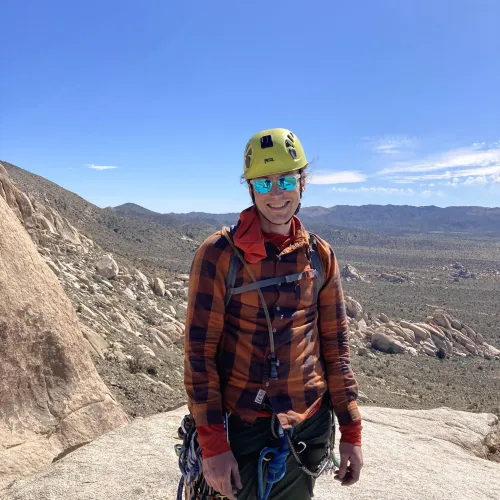
I also enjoy reading (mostly fiction, sometimes of the science variety), watching movies, and, of course, hanging out with my dog Paisley.
Vissapragada: I love exploring and finding vegetarian/vegan-friendly restaurants and bars—and making veggie meals myself! I also enjoy games a lot. I've gotten into chess over the last few years, and my favorite video games of all time are The Legend of Zelda: Breath of the Wild and Tears of the Kingdom. Additionally, I watch a lot of basketball and am very ready to be a Lakers fan after moving to Pasadena.
CS: Lastly, we all love a good space fact—what's your favorite fun or quirky tidbit about stars, planets, or the universe?
Spake: Galileo’s daughter was his greatest source of emotional support, encouragement, medical care, and clothes repairs. She helped save him from the Inquisition, and it’s likely she copied out and prepared some of his scientific work for the printers—almost entirely via letters, as she lived in a convent and only saw the outside world through a small metal grate (I learned this from Dava Sobel’s book).
Senchyna: I love the classic fun factoid that some of the static you get when you detune an analog TV or radio is the redshifted glow of the Big Bang, but so few people use analog tuners anymore!
Vissapragada: I'll never get over super-puffs. We've found planets that look like they have densities similar to cotton candy! How cool is that! And even if they don't, all the alternative theories also sound super cool—rings, extreme hazes, dusty outflows, the list goes on.

